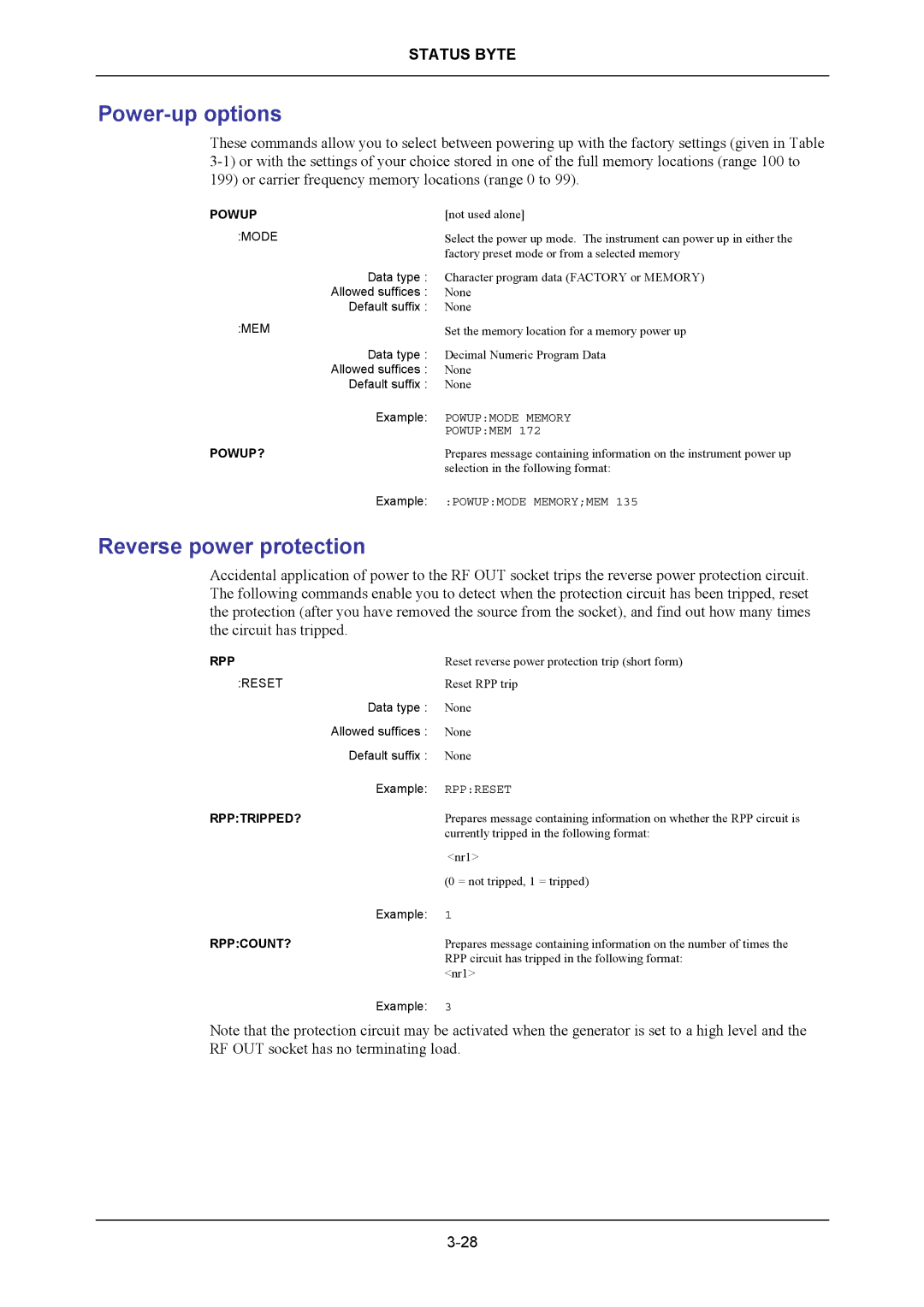
STATUS BYTE
Power-up options
These commands allow you to select between powering up with the factory settings (given in Table
POWUP | [not used alone] |
:MODE | Select the power up mode. The instrument can power up in either the |
| factory preset mode or from a selected memory |
Data type : | Character program data (FACTORY or MEMORY) |
Allowed suffices : | None |
Default suffix : | None |
:MEM | Set the memory location for a memory power up |
Data type : | Decimal Numeric Program Data |
Allowed suffices : | None |
Default suffix : | None |
Example: | POWUP:MODE MEMORY |
| POWUP:MEM 172 |
POWUP? | Prepares message containing information on the instrument power up |
| selection in the following format: |
Example: | :POWUP:MODE MEMORY;MEM 135 |
Reverse power protection
Accidental application of power to the RF OUT socket trips the reverse power protection circuit. The following commands enable you to detect when the protection circuit has been tripped, reset the protection (after you have removed the source from the socket), and find out how many times the circuit has tripped.
RPP | Reset reverse power protection trip (short form) |
:RESET | Reset RPP trip |
Data type : | None |
Allowed suffices : | None |
Default suffix : | None |
Example: | RPP:RESET |
RPP:TRIPPED? | Prepares message containing information on whether the RPP circuit is |
| currently tripped in the following format: |
| <nr1> |
| (0 = not tripped, 1 = tripped) |
Example: | 1 |
RPP:COUNT? | Prepares message containing information on the number of times the |
| RPP circuit has tripped in the following format: |
| <nr1> |
Example: 3
Note that the protection circuit may be activated when the generator is set to a high level and the RF OUT socket has no terminating load.
